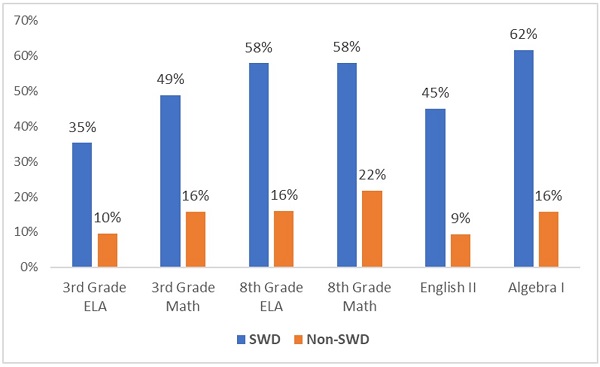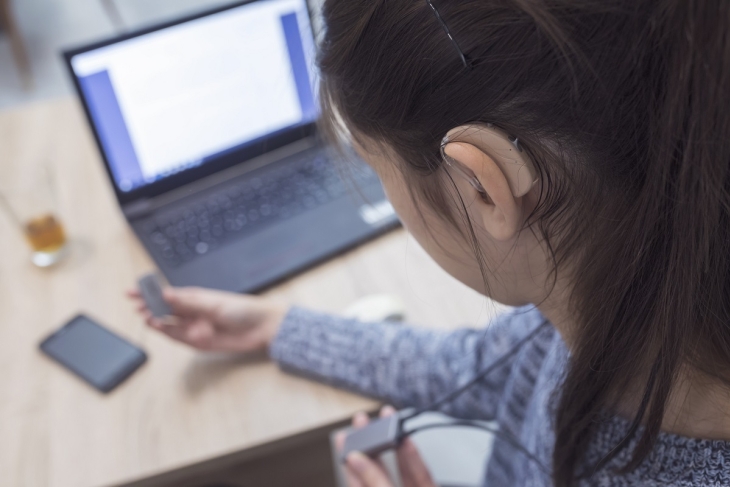With Covid-19 cases rising in Ohio and other parts of the nation, a depressing reality is starting to set in: A whole lot of schools aren’t going to open for in-person learning this fall. Los Angeles and San Diego have announced they’ll begin the school year remotely; so have districts in Maryland and Virginia. Here in Ohio, Middletown, Cleveland, Columbus, and Bowling Green school districts have said they’ll start the year entirely online; several charter schools have as well. Others are leaning in this direction.
It’s hard to blame education leaders for their decision given the uncertainty and public health questions. But keeping schools closed is terrible news for Ohio students, especially those who most need in-person instruction. Research from earlier this spring suggests that low-income pupils probably lost significant ground and are likely to see further learning losses this fall. News coverage has likewise documented the heartbreaking struggles of English language learners (ELL) and students with disabilities (SWD) during the health crisis.
These last two groups already face significant academic challenges and they will likely face a steep “Covid slide” as well. Consider Figure 1, which shows the fraction of English language learners scoring “limited,” the lowest achievement mark on Ohio’s state tests, in 2018–19. Scoring at this achievement level isn’t barely missing the “proficient” cut off—it represents scores that are well below proficient. As the state puts it, students at the limited level have “minimal command of Ohio’s learning standards.” The chart below shows that one-in-three to two-in-five of English language learners score at the lowest level depending on the grade and subject. Those numbers could easily rise due to the additional out-of-school time.
Figure 1: Percent scoring limited on selected Ohio state exams by ELL status, 2018–19

Source: Ohio Department of Education, Advanced Reports.
The next chart shows the performance of students with disabilities. Bear in mind first that about 75 percent of them have relatively mild disabilities that, while posing additional challenges, shouldn’t cause insurmountable obstacles to achieving proficiency given proper supports.[1] Nevertheless, we see that a significant number of students with disabilities achieve at the limited level on state exams, anywhere from 35 percent in third grade ELA to 62 percent in algebra I.
Figure 2: Percent scoring limited on selected Ohio state exams by SWD status, 2018–19

This isn’t just a statistical exercise. Behind these numbers are tens of thousands of students who are having real difficulties meeting state standards, even under “normal” circumstances. They are in desperate need of the help that great teachers and support staff can provide. Unfortunately, with so many schools going remote again this fall, they may not receive the special services necessary for continued progress.
There are no easy, ready-made solutions to address the needs of special-education students during this crisis. But to help, the Annenberg Institute at Brown University has a concise summary of evidence-based strategies for students with disabilities, and TNTP has offered suggestions about providing quality remote instruction for English language learners. Those are excellent resources especially for educators. What can Ohio’s state leaders do? Here are three ideas.
- Advocate on behalf of special-needs students. While not a policy solution per se, state officials could use their bully pulpits to voice concerns about the hardships that special-needs students will face as their schools remain shut. They could put the issue on the media’s radar, prioritize special-needs students at state board of education meetings, or share parents’ perspectives about the challenges of at-home education. This use of “soft power” could encourage schools to do their very best to educate Ohio’s neediest children, whether online or in person (see #3).
- Create a tutoring program that supports English language learners and students with disabilities. As my Gadfly colleague Jessica Poiner and others have written, high-quality tutoring is a proven strategy that can lift achievement. Ohio could follow in Tennessee’s footsteps and create a statewide tutoring corps that provides one-on-one or small group instruction over the internet and gives priority placement to special-needs students. Planning, recruitment, and training should start sooner than later, perhaps with an aim of program launch in early 2021. Such a program might be financially supported through forthcoming federal aid that is expected to pass in the coming weeks.
- Encourage schools to provide in-person instruction to students with special needs. The state should encourage, or perhaps even require, schools to reopen and serve at least English language learners and students with disabilities. These student groups typically comprise 10 to 20 percent of a school’s overall enrollment. As such, most schools should have the physical capacity to provide safe, in-person instruction to these students, even if they remain closed to the wider student body. This type of selective reopening has also been suggested by analysts from McKinsey & Company and the Center for American Progress.
With Ohio's two largest school districts announcing they'll start the year fully remote, it wouldn't be surprising to see more follow suit in the days ahead. We all hope that schools will provide much-improved remote learning opportunities this fall. But it can't be taken for granted, especially for students with special needs. Because of their unique needs, remote learning is unlikely to fully unlock their academic potential. State leaders need to recognize this immense challenge, and forcefully advocate on behalf of Ohio's English language learners and students with disabilities.
[1] See page twenty-six of the Ohio Legislative Service Commission’s Complete School Funding Resource for a breakdown of SWDs by the six categories of disability used for funding purposes.


